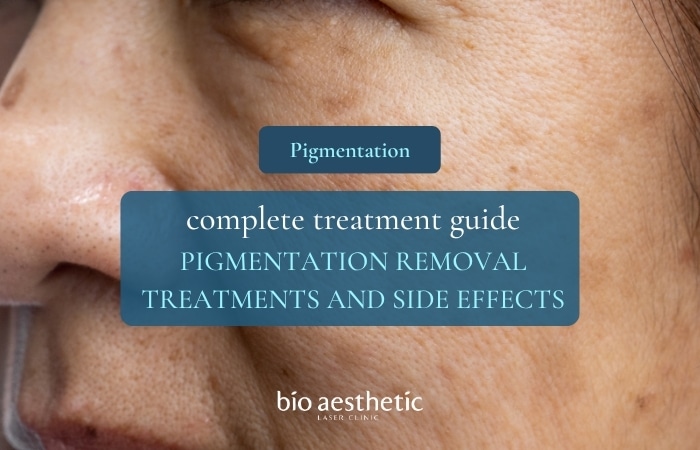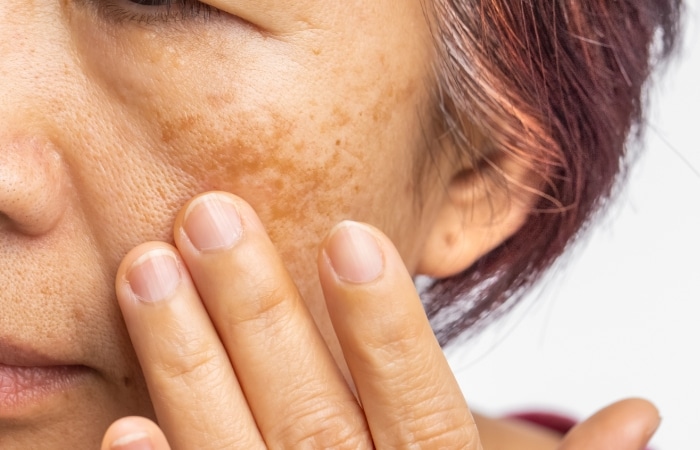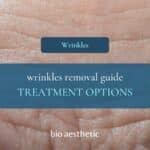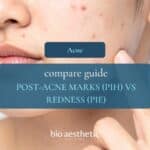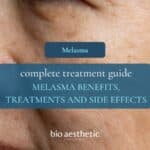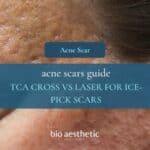Pigmentation Removal in Singapore: Complete Guide to Types, Treatments & Results
- “Pigmentation” includes freckles, sunspots, melasma, PIH (acne marks) and deeper dermal pigment – each behaves differently.
- In Singapore, strong UV, heat, hormones and inflammation from acne or irritation are the main triggers.
- Most patients need a series of gentle, repeated treatments rather than one very strong session.
- Combination plans (brightening lasers, medical creams, sun protection and supportive facials) are often safer and more stable.
- If you are unsure whether you have freckles, melasma or “just pigmentation”, diagnosis is more important than choosing a machine.
What Is Pigmentation?
Pigmentation occurs when melanocytes (pigment-producing cells) create more melanin in certain areas than the surrounding skin.
This extra pigment can appear as spots, patches or general unevenness. Some forms are mainly cosmetic; others can affect confidence because they make the skin look older, “dirty” or tired.
In Singapore, we often see:
- Brown spots after years of sun exposure
- Patchy pigmentation that worsens with pregnancy or hormonal changes
- Marks that linger long after acne, eczema or rashes have settled
- Blue-grey “shadows” from deeper dermal pigment in the skin
Not all pigmentation is harmful or dangerous, but many patients seek treatment when it becomes more obvious, difficult to conceal with makeup, or starts to affect self-confidence.
Why Is Pigmentation So Common in Singapore?
Several factors make pigmentation particularly common in Singapore’s environment and lifestyle:
- Year-round strong UV – even short walks between home, MRT and office add up over time.
- Heat and humidity – heat alone can aggravate melasma and PIH, even without sunburn.
- Hormonal changes – pregnancy, contraceptive pills and other hormonal shifts may trigger melasma.
- Inflammation – ongoing acne, eczema, scratching and harsh DIY treatments often leave PIH.
- Genetics and skin type – many Asian skin types are more “pigment-reactive” and mark easily.
Because of this, long-term pigmentation control in Singapore is not only about treatment in the clinic, but also everyday management of sun, heat and inflammation.
Main Types of Pigmentation in Singapore
Different pigmentation types behave differently and respond to different treatments. Treating them all with one strong approach can lead to poor results or even worsening.
Below is an overview of the main patterns seen in Singapore.
Common patterns patients notice
- Freckles – small, scattered brown spots that darken with sun and lighten with protection.
- Sunspots / age spots (solar lentigines) – larger, more defined patches that appear after years of UV exposure.
- Melasma – patchy, often symmetrical brown or grey-brown areas on the cheeks, forehead or upper lip.
- Post-inflammatory hyperpigmentation (PIH) – brown marks left after acne, eczema, rashes or burns.
- Dermal pigmentation (e.g. Hori’s) – deeper, blue-grey “shadow” patches more common in Asian skin.
- General uneven tone – widespread dullness and patchiness rather than distinct spots.
The table below summarises these types at a glance.
| Type of Pigmentation | How It Looks | Common Triggers | How Stubborn Is It? |
|---|---|---|---|
| Freckles | Tiny, scattered brown dots on sun-exposed areas | Sun + genetics | Usually responds well with appropriate treatment |
| Sunspots / Age Spots (Lentigines) | Larger, more defined brown spots or patches | Years of UV exposure | Moderate – often need targeted treatment |
| Melasma | Patchy, often symmetrical brown or grey-brown areas | Hormones, heat, UV exposure | More challenging – needs long-term control |
| Post-inflammatory Hyperpigmentation (PIH) | Marks exactly where acne, eczema or irritation once was | Acne, eczema, scratching, strong treatments | Varies – can be slow if triggers persist |
| Dermal Pigment (e.g. Hori’s) | Blue-grey “shadow” patches deeper in the skin | Genetic factors, common in Asian skin | Typically slower to improve, needs patience |
| General Uneven Tone | Overall dullness and patchiness without clear spots | UV, lifestyle, mild cumulative damage | Often improves with combination care |
Pigmentation vs Freckles vs Melasma – What’s the Difference?
Patients often ask whether they have freckles, sun damage, melasma, or “just pigmentation”. Distinguishing these patterns helps guide the safest and most realistic treatment plan.
- If you see tiny dots from young age that darken easily with sun, these are often freckles.
- If you notice larger, more isolated spots that appeared later in life, they may be sunspots or age spots.
- If you see patches that look like a shadow or “dirty moustache” on the upper lip, or symmetrical patches on both cheeks, melasma may be more likely.
For spot-focused information, you can read more on freckles removal in Singapore. For patchy, hormonally influenced patterns, find out more from melasma treatment page provides a deeper explanation.
| Feature | Freckles | Sunspots / Age Spots | Melasma |
|---|---|---|---|
| Shape & Pattern | Tiny, scattered dots | Bigger, more defined spots | Patchy areas, often symmetrical |
| Age It Appears | Often from childhood or teenage years | More common from 30s onwards | 20s–40s, often linked to hormonal shifts |
| Main Triggers | Sun exposure and genetics | Cumulative UV over years | Hormones, heat and UV combined |
| Ease of Treatment | Generally easier–moderate | Moderate, often spot-focused | More challenging; requires careful management |
| Recurrence Risk | Medium (with ongoing sun exposure) | Low–medium | Higher without long-term care |
How a Doctor Assesses Pigmentation
Before any pigmentation treatment, it is important to establish what type or combination of types you actually have.
A medical consultation typically includes:
- History – when the pigmentation started, how it has changed, and any pregnancies or new medications.
- Pattern – spots vs patches, one side vs symmetrical, face vs body.
- Depth – surface (epidermal) vs deeper (dermal) pigment.
- Skin type and sensitivity – how easily you tan, and any past reactions to treatments.
- Current triggers – ongoing acne, eczema, frequent sun or heat exposure, harsh products or facials.
This information guides whether your plan centres more on gentle laser work, pigment-correcting creams, peels, supportive facials or a combination.
Pigmentation Removal Treatments in Singapore
There is no single “best machine” for pigmentation. The right plan is built around your type of pigmentation, skin type and lifestyle. Below are the main treatment categories commonly used in clinical practice.
Brightening or Pigment Lasers (Gentle, Repeated Approach)
Brightening lasers are frequently used for freckles, sunspots and PIH, and in carefully selected cases can support melasma management. They use controlled light energy to break pigment into smaller fragments that the body gradually clears.
Sessions are typically spaced a few weeks apart, and gentle, repeated treatments are preferred over very strong single sessions, especially in Asian skin.
Rejuvenation Lasers for Uneven Tone
Rejuvenation lasers are often used when the main concerns are dullness, mild uneven tone and early textural changes.
They aim to improve overall brightness and skin quality, and work well as a maintenance or combination option alongside more pigment-focused treatments.
Targeted Spot Lasers for Sunspots
Where there are clear, isolated sunspots or age spots (not melasma), more targeted laser settings may be considered.
These are applied specifically to the spots, which may darken and form a small crust before flaking off.
This approach is more focused and is not typically used for diffuse or patchy melasma.
Medical-Grade Chemical Peels
Chemical peels use controlled acids to exfoliate the upper layers of the skin, encouraging new, more even skin to surface.
They can be helpful for surface PIH, mild sun damage and rough texture. Peels must be tailored to your skin type; overly strong peels on sensitive or darker skin can increase the risk of PIH, so selection and timing are important.
Pigment-Correcting Medical Creams and Skincare
For conditions such as melasma and PIH, pigment-correcting creams and medical-grade skincare often form the backbone of long-term control.
These products help calm pigment-producing cells and reduce re-darkening between clinic sessions.
They are usually prescribed or clinic-dispensed rather than off-the-shelf whitening creams.
Skin-Quality Injectables (Adjunct, Not Main Pigment Eraser)
Hydrating or skin-boosting injectables can improve overall glow, texture and skin quality. They can help the complexion look more even, especially in skin that is both pigmented and dehydrated or acne-scarred.
However, they do not directly erase pigment and are best viewed as an adjunct to a proper pigmentation plan.
Medical Facials and Maintenance
Gentle, medically designed facials can support barrier repair, hydration and mild exfoliation.
This is different from aggressive extraction facials or strong DIY treatments, which may aggravate PIH.
Facials are often most effective when integrated into a structured plan rather than purchased as standalone promotions.
If you are also considering general skin maintenance, you can explore suitable options on your facial treatment page.
Treatment Comparison – Which Options Address Which Concerns?
The table below summarises how the main treatment types are typically used.
| Treatment Type | Main Uses | Key Strengths | Considerations |
|---|---|---|---|
| Brightening Laser | Freckles, sunspots, PIH, uneven tone | Gentle, suitable for many Asian skin types | Requires multiple sessions and consistency |
| Rejuvenation Laser | Dullness, mild uneven tone, early texture changes | Improves overall glow and skin quality | Not primarily a “spot remover” for deep pigment |
| Spot Laser | Isolated sunspots or age spots | Targeted approach for discrete lesions | Not suitable for diffuse melasma or patchy pigment |
| Chemical Peel | Surface PIH, mild sun damage, rough texture | Helps turnover and smoothness of the skin | Strength and type must be tailored to your skin |
| Pigment Creams & Skincare | Melasma, PIH, long-term maintenance | Helps keep pigment more stable between sessions | Requires regular use and follow-up |
| Skin-Quality Injectables | Overall glow, hydration, skin texture | Complements other treatments for a more even look | Not a primary treatment for pigmentation alone |
Can Pigmentation Treatments Be Combined?
In practice, most pigmentation plans are combination-based. This allows each component to be kept gentle, while still moving the overall result in a meaningful and safer way.
Examples include:
- Freckles + uneven tone – brightening laser plus a rejuvenation laser, with consistent sunscreen and brightening skincare.
- PIH after acne – parallel acne control, brightening laser or peel, and pigment-correcting creams.
- Melasma – carefully selected gentle laser settings, long-term pigment creams, and strict sun and heat management.
- Dermal pigment – multiple rounds of gentle treatment with realistic expectations and supportive skincare.
If you also have active acne or acne scars, your pigmentation plan may be integrated with acne treatment and, where appropriate, acne scar removal options.
How Many Sessions and What Downtime Should You Expect?
Pigmentation is usually a journey rather than a single session.
The number of treatments and downtime depend on the type and depth of pigment, and the modalities chosen.
Most patients see progressive change over several visits.
| Pigment Type / Approach | Typical Number of Sessions | Typical Downtime | Additional Notes |
|---|---|---|---|
| Freckles (brightening laser) | Around 3–6 sessions | Redness for a few hours; spots may darken before fading | Often responds well with proper sun protection |
| Sunspots (spot laser) | 1–3 sessions | Local crusting or darkening for a few days | Important not to pick at crusts |
| PIH (laser or peels) | 3–8+ sessions | Mild redness or flaking depending on method | Ongoing acne control is key to prevent new marks |
| Melasma (combination plan) | 6–12+ sessions | Usually minimal with gentle approaches | Focus on stability, not aggressive lightening |
| Dermal pigment | Often 8–12+ sessions | Mild, short-lived redness | Improvement tends to be gradual |
Pigmentation Removal Prices in Singapore – What to Expect
Treatment fees for pigmentation vary based on the type and severity of your condition, the areas involved, and the number and combination of sessions recommended. Clinics in Singapore commonly charge per session, per area or via a structured treatment plan.
To comply with local guidelines, final treatment fees are provided after a medical assessment and discussion of your goals.
The table below is a general guide to how different categories are usually charged. It is not a quotation.
| Treatment Category | How It Is Usually Charged | What Influences the Fee |
|---|---|---|
| Brightening Lasers | $398 | Number of sessions, areas treated, treatment intensity |
| Spot Lasers for Sunspots | $150 | Number, size and distribution of spots |
| Chemical Peels | $280 | Type of peel and strength used |
| Pigment-Correcting Skincare | Enquire Us | Formulations and duration of use |
| Skin-Quality Injectables | Enquire Us | Type of product and number of sessions |
During consultation, you will receive a personalised plan and a transparent quotation based on your skin assessment and the options most suitable for you.
Aftercare – What You Do at Home Matters
Proper aftercare plays a large role in how well pigmentation responds and how stable results remain. Key elements include:
- Daily sun protection – broad-spectrum sunscreen, reapplication when outdoors, hats and sunglasses where possible.
- Gentle skincare – avoid harsh scrubs, strong brushes or unmonitored DIY acids.
- Managing ongoing triggers – treat acne promptly to reduce PIH; manage eczema or sensitive skin with appropriate care.
- Using prescribed products correctly – follow the recommended frequency; do not over-apply or mix with strong products without advice.
- Attending reviews – so that your doctor can adjust energy levels, frequency and topical products if needed.
Who Needs Extra Caution?
Certain situations may require more cautious planning, or a phased approach starting with gentler steps:
- Recent significant sun exposure or sunburn.
- History of strong reactions to peels, lasers or other procedures.
- Very active eczema, psoriasis or other inflammatory skin conditions on the face.
- Pregnancy or breastfeeding, when some creams or procedures may be deferred or modified.
- Use of certain medications or products that increase skin sensitivity.
In many of these cases, the treatment plan is not ruled out completely, but timed and adjusted to reduce risks and protect your skin barrier.
When Should You See a Doctor for Pigmentation?
It may be sensible to seek a professional assessment if:
- Your pigmentation has appeared or worsened noticeably over a short period.
- You see patchy and symmetrical pigment that could suggest melasma.
- Marks from acne have not faded after several months despite basic care.
- You have already tried multiple facials or products with little improvement.
- There is any pigmented spot that is changing, itchy, bleeding or otherwise worrying.
A short consultation can help confirm what type of pigmentation you have and whether treatments should focus on freckles, melasma, PIH or a combination.
Frequently Asked Questions about Pigmentation Removal in Singapore
1. Is all pigmentation the same?
No. Freckles, sunspots, melasma, PIH and dermal pigment are all distinct conditions. They may appear similar at a glance, but they behave differently and respond to different treatments.
This is why a one-size-fits-all approach often gives mixed results.
2. Does pigmentation always come back?
Not always. Some types, such as certain sunspots, may stay lighter if treated appropriately and if you maintain good sun habits.
Others, especially melasma, are more prone to flare if triggers such as UV, heat and hormonal changes are not controlled, so ongoing management is important.
3. How long before I see results from pigmentation treatment?
Many patients notice progressive changes from around three to six sessions, depending on how deep and long-standing the pigmentation is.
Surface freckles and PIH often respond faster than deeper or hormonal pigmentation.
4. Is one strong laser session better than multiple gentle ones?
In Asian skin, a very strong single session can increase the risk of burns and rebound pigmentation.
A more measured approach with gentle, repeated treatments is usually safer and offers more predictable outcomes.
5. Can I rely on whitening creams alone?
Over-the-counter whitening creams may help mild unevenness but are unlikely to significantly improve deeper, older or hormonally driven pigmentation.
They are often used as support, not the main treatment, especially in conditions such as melasma or Hori’s.
6. Can I treat pigmentation if I still have active acne?
Yes, but it is important to control acne properly so that fewer new PIH marks form. In many cases, acne management is planned in parallel with pigmentation treatment.
You may also be guided towards dedicated acne treatment and, where appropriate, acne scar options.
7. Is pigmentation removal safe for darker Asian skin tones?
When settings, techniques and treatment choices are tailored correctly, pigmentation treatments can be performed safely in darker skin tones.
The key is careful selection of energy levels, spacing of sessions and close attention to how your skin responds.
8. Are pigmentation results permanent?
Results can be long-lasting, particularly for certain types of sun-induced pigmentation, if you protect your skin well.
However, with ongoing sun, heat exposure and natural ageing, it is still possible for new pigmentation to develop over time.
Some patients choose periodic maintenance sessions.
9. Do I need to stop all my skincare before treatment?
Not always. However, some active products – such as strong acids or retinoids – may be paused temporarily before and after certain procedures.
Your doctor will advise which products to continue, reduce or stop, based on your specific plan.
10. How do I know which pigmentation treatment is right for me?
The best treatment depends on your exact pigment type(s), skin type and lifestyle.
A face-to-face consultation allows your skin to be assessed, your concerns and expectations to be discussed, and a plan to be tailored around what is most suitable and practical for you.
Planning Your Next Step for Pigmentation Removal in Singapore
If you are unsure whether you are dealing with freckles, sun damage, melasma or acne-related marks, the safest first step is a proper assessment.
A structured plan can then be created around your pigment type, skin type and daily routine, rather than relying on trial-and-error products or one-off treatments.
Dr Vijay Sampath,
M.B.B.S, M.S (Gen Surg), DNB (Gen Surg), MRCS (Edinburgh)
Last reviewed: November 2025
Aesthetic Clinic Singapore — Our Locations
Visit our Aesthetic Clinic Orchard or Aesthetic Clinic Tampines for personalised acne scar treatment and comprehensive aesthetic care.
Aesthetic Clinic Orchard
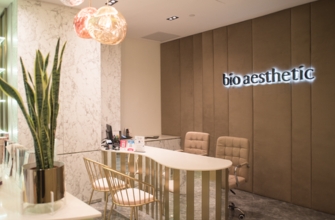
Tel: 6333 4566 | WhatsApp Us
Aesthetic Clinic Tampines
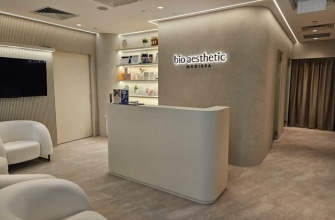
Tel: 6782 2777 | WhatsApp Us
BOOK A CONSULTATION.
Call Us at +65 6333 4566 • hello@bioaesthetic.com.sg
ABOUT BIO AESTHETIC LASER CLINIC

Bio Aesthetic Laser Clinic is a bespoke aesthetic clinic in Singapore specialising in treatments such as:
MORE QUESTIONS?
Feel free to Call Us or WhatsApp Us. We are more than happy to address your concerns




